Project To Fund And Promote The Parkinson's Cure PFFNB2 From Johns Hopkins University
Donate online for this Johns Hopkins Parkinsons cure development https://aspire.hopkinsmedicine.org/project/36768
Goal:
Monitor the development of cure's for Parkinson's disease, and when a worthy candidate is found, help move it along to be available to Parkinson's patients. There is no process by which a drug discovery at a university gets commercialized by a pharmaceutical company. Also, the funding for research at a university is not always timely and can get delayed as the bureaucracy of universities and government moves slowly or not at all.
Problem:
At its root, Parkinson's disease is caused initially by neurotoxins which interfere with the ability of a neuron to recycle a protein called alpha-synuclein found within its cell walls (intracellular). Alpha-synuclein can be found outside the cell walls of the neuron (extracellular), but this will not inhibit a neuron from signalling. The failure of a neuron to recycle alpha-synuclein leads to alpha-synuclein aggregation causing a disruption in signaling and the symptoms of Parkinson's.
The alpha-synuclein protein can get into a misfolded state in which it is not recognized and thus not procesed. The single monamer version of the protein can bond with other alpha-synuclein proteins forming an elongated polymer, or even a 3D oligamer. Eventually it becomes a tangled mess known as a "Lewy body" which inhibits the neuron from properly signaling dopamine causing ineffective control of muscles and disruption of the proprioceptic neuron's ability to be positionaly aware. The inhibition of the signaling of neurons and continuous formation of aggregated alpha-synuclein leads to loss of coordination and balance and to the progression of Parkinson's disease.
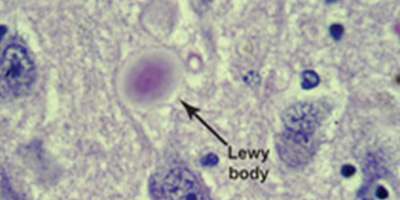
Requirements For A Parkinson's Cure:
A cure must possess the following characteristics:- it must be able to pass through the blood-brain-barrier
- it must be able to cross through the neuron cell wall and enter into the neuron
- it must dissolve the aggregated alpha-synuclein protein to restore neuron signalling
A Cure Must Pass Through The Blood-Brain-Barrier
Parkinson's disease primarily affects the neurons in a part of the brain known as the "substantia nigra" known for its motor neurons. In order to restore these neurons, the treatment must pass through the blood-brain-barrier.
A Cure Must Pass Through The Neuron Cell Wall
The signaling by the motor neurons is attenuated or blocked by the aggregation of Alpha-Synuclein proteins within the neuron cell. In order to get to the aggregated Alpha-Synuclein, the treatment must first pass through the neuron cell wall.
A Cure Must Dissolve The Aggregated Alpha-Synuclein
Cell proteins are typically recycled by the lysosomes within the cell, but once aggregated, the lysosomes become ineffective. A cure must be able to disolve the misfolded and aggregated form of Alpha-Synuclein while not disturbing proper Alpha-Synuclein monomer proteins, which perform a purpose in the cell.
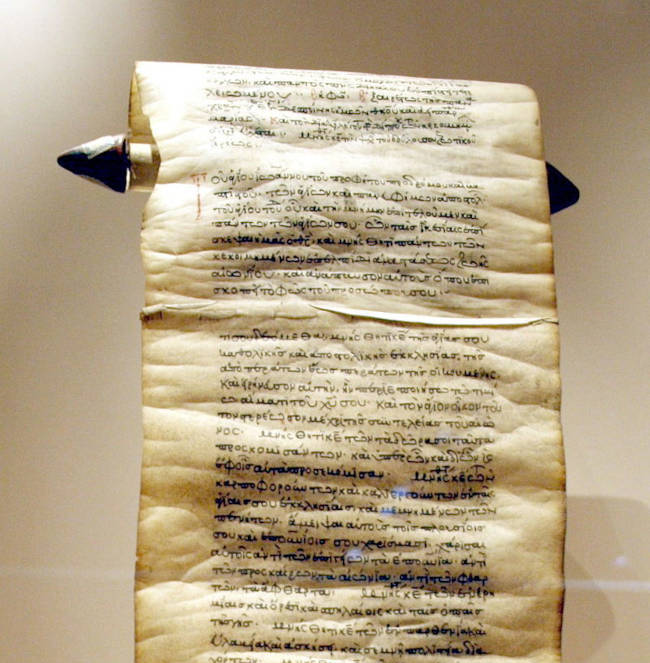
A Parkinson's Cure:
this treatment from Johns Hopkins University possess the following characteristics:- able to pass through the blood-brain-barrier
- able to cross through the neuron cell wall and enter into the neuron
- able to dissolve the aggregated alpha-synuclein protein to restore neuron signalling
After reviewing over 100 potential cures, we became very discouraged as none could perform all three tasks required to restore neuron signalling, that is until we came across some promising research by Dr. Xiaobo Mao, Associate Professor of Neurology and member of the Institute for Cell Engineering at Johns Hopkins University in collaboration with the University of Michigan, developer of the nanobody platform. Their treatment could process as much as 80% of the aggregated alpha-synuclein protein in a mouse study. Before they can perform human trials, the researchers must perform some additional pre-clinical mouse trials looking at long term effects.
The experimental treatment PFFNB2 had two delivery mechanisms: the Adeno-associated Virus (AAV) and non-viral delivery.
The success of PFFNB2 has lead to development of a second generation drug which improved alpha-synuclein clearance from 30% to 80% and is in need of an in vivo mouse study.
Also see:- the press release from Johns Hopkins University about their candidate Parkinson's cure: PFFNB2 (07/28/2022)
- PFFNB2 patent by JHU and U of Michigan
- paper published in Nature
- Dr. Xiaobo Mao bio
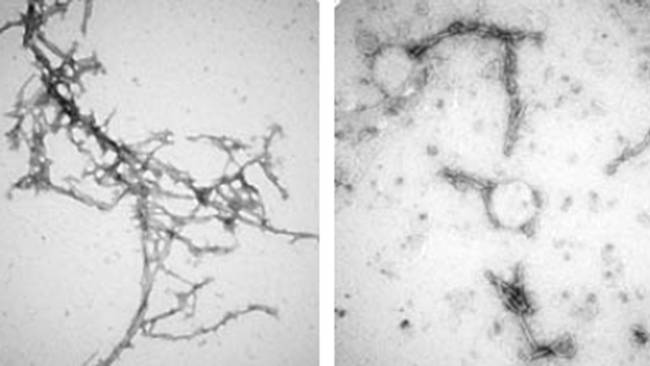
The structure of alpha-synuclein clumps (on the left) was disrupted by the nanobody PFFNB2 (as shown on the right). Credit: Xiaobo Mao
Elixor Of Youth:
Approximately 10-30% of people over the age of 70 years will have lewy bodies in their brain, but with no problems with motor ability or memory function.
Many of the physical traits attributed to aging may actually due to alpha-synuclein protein aggregation. Thus the market for this Parkinson's cure may be for a much greater population than just Parkinson's patients.

Pre-clinical Trials:
The term "pre-clinical trials" refers to mouse trials before human trials.
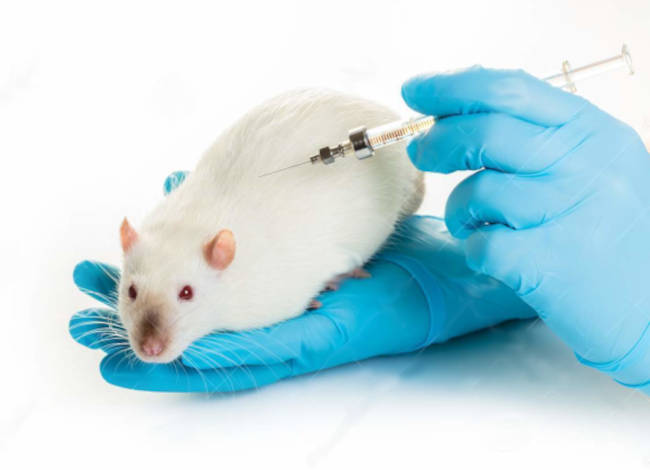
Clinical Trials:
A new Parkinson's treatment could be used under "compassionate use" also known as "expanded access programs" (EAPs), "right to try", as a supplement which makes no claims or get FDA phase 1, 2 and 3 approval.
FDA Compassionate Use:
This protocol relates to the use of an investigational medicine outside of a clinical trial to treat a serious or life-threatening condition. Mercury toxicity is often such a condition. A request for "Compassionate Use" or "Expanded Access" must be requested by a licensed doctor and approved by the FDA for an individual. Requests are made by phone or email. Adverse events must be immediately reported to the FDA.
EAPs conditions of use:- has a serious and life-threatening condition
- has no other comparable treatment option
- has exhausted approved treatment options
- likely to have benefits that outweigh the risks
- if drug is in clinical trials but does not qualify
See FDA expanded access contact information and forms.
Right To Try:
A US law passed in 2018 provides another way to access unapproved drugs. Right to try is only for drugs in a FDA phase 1 trial. This law is used to request access to an unapproved drug from a company that makes it, without having to go through the FDA.
FDA Phase 1, 2, 3 Trials:
Consultants and contractors:
- ProPharma
- Consano - clinical research trials
- FDA Compliance Group
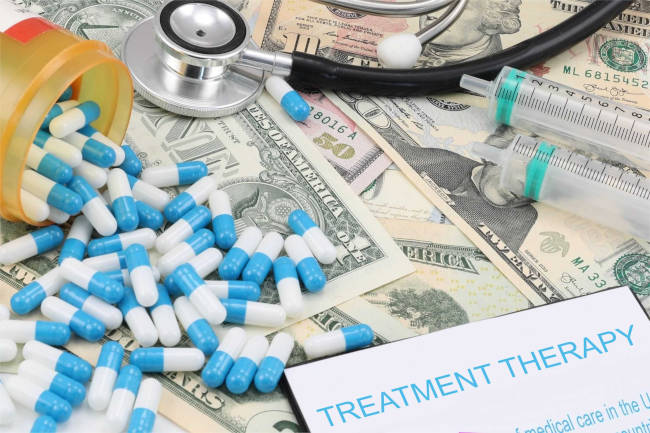
Potential Sources of Funding:
The development of PFFNB2 was developed with funds from Parkinson.org but it needs additional funding. This novel treatment needs to complete pre-clinical mouse trials and clinical trials before it can be prescribed by a doctor.
Pre-clinical Trials:
This Johns Hopkins University Parkinson's treatment has shown efficacy in mice. It now requires a long term mouse study (8 months) to reveal potential side effects. The development team will be using the Johns Hopkins University Aspire crowdfunding platform to raise money for this endeavor. Please donate.
Clinical Trials:
There is no standard process by which discoveries are taken from the university laboratory and commercialized by pharmaceutical corporations. The two dominant Parkinson's foundations (Parkinson Foundation and the Micheal J. Fox Foundation) readily admit they fund research for a cure but have no plan to develop the cure for use by patients. Typically a pharmaceutical company will license the University patent and run the treatment through FDA phase 1, 2 and 3 trials and then generate the manufacturing facilities to produce the drug.

Call To Action:
Funding has stalled so donations are imperative to get this done quickly and trigger the next step: Human trials.
I hope you will join me in contributing a donation to support to this work. Please also consider forwarding this email to people and families affected by Parkinson's. I believe that this particular treatment is the best hope for a Parkinson's cure - and I hope you will show your kindness with a gift to support their work.
I’m also asking those with Facebook accounts to post this link to the crowdfunding page in an attempt to reach as many people as possible using the power of viral social media.
Donate online https://aspire.hopkinsmedicine.org/project/36768
or send donations by check to Johns Hopkins University:
Checks made out to: Johns Hopkins University
check memo comment: Dr. Xiaobo Mao research
Address:
Attn: Kevin McGuire The Fund for Johns Hopkins Medicine Institute for Cell Engineering 733 N. Broadway, MRB 371 Baltimore, MD 21205
We have been contacting pharmaceutical companies to make them aware of this treatment in the hope they will license this technology and fund the FDA clinical trials. We could use your help.
This website is not affiliated with Johns Hopkins University or the University of Michigan.
